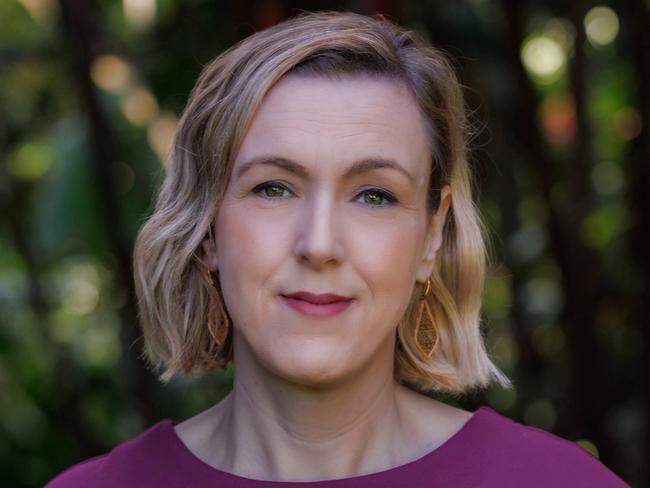Cairns pediatrician explains the process of FASD assessment
Cairns pediatrician Dr Angela Wilson explains the “complex, multidimensional” process of diagnosing Fetal Alcohol Spectrum Disorder (FASD) in Australia.

News
Don't miss out on the headlines from News. Followed categories will be added to My News.
A Cairns pediatrician is calling for the state government to include health professionals in the response to youth crime, as assessing Fetal Alcohol Spectrum Disorder (FASD) is “complex” and “multidimensional”.
It was reported that 15 per cent of Queensland children in youth justice custody in 2023 were either diagnosed with FASD or were suspected to have the condition, and during the 2024/25 financial year Queensland sentenced more children than any other state in Australia.
FASD is a life long neurodevelopmental condition caused by alcohol consumption during pregnancy, and can cause a range of behavioural and cognitive problems as well as physical abnormalities.
In April, the Cairns Post launched Cause and Effect, a campaign calling for mandatory and free FASD testing for Queensland’s at-risk children, including those involved in the youth justice system and children in out-of-home care.
As a part of the campaign, Cairns pediatrician Dr Angela Wilson called for greater inclusion of pediatricians and other health professionals in the response to youth crime in Queensland.
Dr Wilson has spent more than 10 years undertaking FASD assessment and works privately.
“It’s a really complex, multidimensional assessment that takes time,” Dr Wilson said of the FASD assessment process.

She said the assessment usually required at least two clinicians – a psychologist and a pediatrician or child and adolescent psychiatrist.
The “gold standard” assessment also included a speech therapist and an occupational therapist, she said.
However, Dr Wilson said in private settings the assessments often had to be more brief, usually involving a psychologist working with a pediatrician or psychiatrist.
She said pediatricians firstly took a thorough developmental history of a child, which took time, “because there may be other explanations for the young person’s presentation, for example, genetic conditions, developmental trauma, ADHD or autism”.
Psychologists will then do in-depth assessments to “understand how a young person functions and what their background is”, she said.
“To make a diagnosis of FASD, you need to have severe impairments in at least three areas or ‘domains’ of brain function, which could include your ability to understand language, to manage impulse control, to think and reason,” Dr Wilson said.
In the context of FASD assessment, there are 10 domains of brain function related to neurodevelopment.
There are also characteristic facial features of FASD, but Dr Wilson said if these weren’t present in an individual, confirmation of prenatal alcohol exposure was required to make a diagnosis.

“FASD can look like other developmental conditions, but the differentiating fact is that they have multiple severe impairments, that they have been exposed to alcohol often at high risk levels, and that we’ve excluded other causes for their developmental difficulties,” she said.
“So it is a really important piece of the puzzle that we find that information.”
While she acknowledged it can be difficult to confirm prenatal alcohol exposure due to the shame associated with alcohol consumption during pregnancy, Dr Wilson said, “it’s often less of a barrier than we think it is because parents and family members are concerned about their young people’s wellbeing”.
However, Dr Wilson said determining this exposure could be challenging for children in out-of-home care, for whom there may be barriers to speak to birth families.
Dr Wilson said most people with FASD would never get a diagnosis because it’s an “invisible disability”, and said the prevalence of FASD in Australia was estimated to be similar to the prevalence of autism, making it the “leading non-genetic cause for intellectual impairment in Western countries”.

There were 290,000 Australians living with autism in 2022, according to the Australian Bureau of Statistics’ 2022 Survey of Disability, Ageing and Carers.
A 2024 Canadian study estimated that 98 per cent of Canadians with FASD were either undiagnosed or misdiagnosed with other neurodevelopmental conditions, such as autism and ADHD.
A key difference in the assessment process between the public and private sectors is waiting times and costs.
People can wait up to two years to be assessed for FASD by a public clinic, while private assessments can cost thousands of dollars.
The Australian guidelines for the diagnosis of FASD are currently being updated by researcher Dr Natasha Reid and her team at the University of Queensland.
Dr Reid and other Queensland experts have called for improvements to FASD assessment for at-risk children as a part of the Cause and Effect campaign.
Cairns Mayor Amy Eden has also supported the move.
More Coverage
Originally published as Cairns pediatrician explains the process of FASD assessment




